Reflection
Before I begin the work for this part, I am going to go back and take a reflective look over the work I produced in the four previous parts.
Assignment One

This drawing was done a long time ago, and looking back at the image I sure can see how far I’ve come. I remember thinking I was happy with the drawing at the time. It looked like the things it was meant to, but as I’ve come to learn this isn’t always necessarily the point of a successful drawing. Technically it’s ok, some minor perspective issues and some poor upstanding of how to render. But the main thing is this drawing doesn’t say anything about me. It is just a collection of objects, I understand now that an image like this would be better as a photo. A drawing must have, to some degree an agenda and say something about its author.
Assignment Two

This assignment was a massive learning experience for me. In the past I’d always sat down and made a drawing; once it was finished I’d put it away and start another one. I almost never repeated myself. This assignment pushed me to develop an image, to work through the composition and play around with my mark making. Although the final submission never really felt totally resolved, I’d garnered a better understanding of who I was as an artist. It also opened my eyes, made me think outside of the subjects and techniques I’d relied on in the past.
Assignment Three
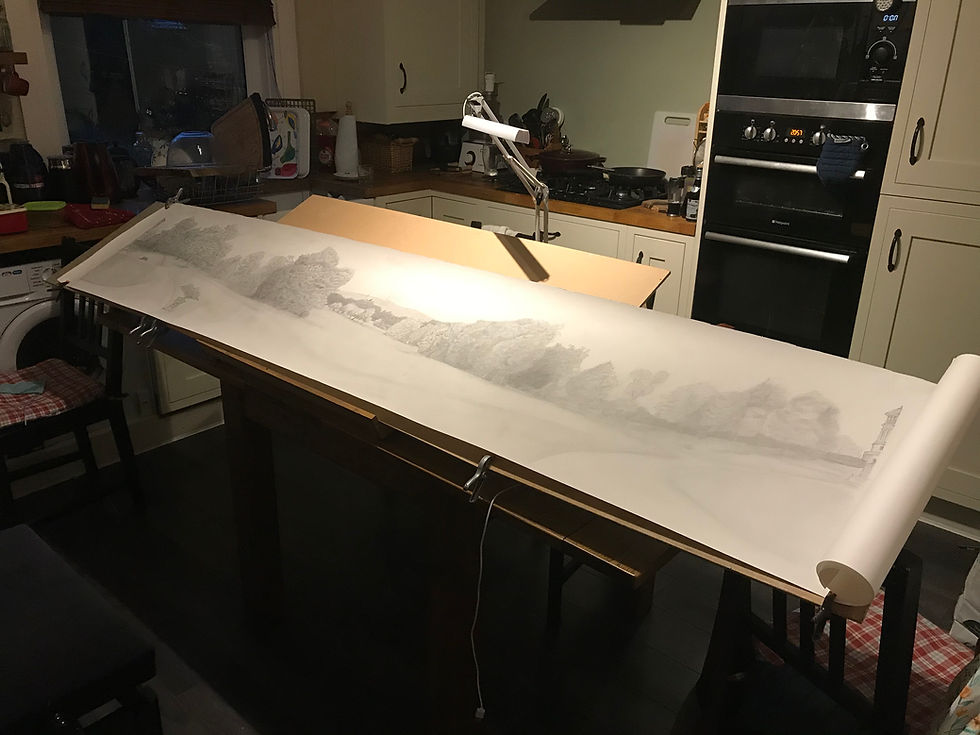
This was an undertaking which without the previous exercises, I would never have thought about, let alone embarked on. I set out to make a drawing that matched the vastness of the landscape in scale. Because of this I was forced to think about the technical act of producing it. It also sparked a more focused and thought out understanding of why I was doing the drawing. If I was going to spend months making a drawing, I’d better have a bloody reason.
Assignment Four

Drawing people is hard, however you slice it. The work I produced for this assignment gave me the most turmoil. I’d always previously really enjoyed drawing people: it was what I did most. But after everything I’d learned up to this point I found it very difficult to resolve how to both push myself creatively, while maintain a level of quality in the drawing I was satisfied with.
After the best part of three years, hundreds of drawings, and countless hours thinking about images, the question I need to answer is: what have I learned? Well, for me, I think this can be broken down into three main areas.
Technique - They say that practice makes perfect, while I don’t believe perfection exists in art, [DO1] what practice does is make you better, the sheer act of repetition trains muscles and locks in skills. I am undoubtedly better at controlling drawing mediums now than I was three years ago. I have also been exposed to a much wider range of mediums than I would have been without the course. I now feel that when I sit down to produce a work I have so many more options to express what I’m trying to say.
How to think about my practice - Prior to embarking on this course, I honestly don’t think I’d ever thought about what I was drawing. Making pictures was just something I did, but what I now understand is that, producing art is different to just making pictures. Art should come from somewhere, there should be intent, a reason, it’s not only about producing a ‘nice’ picture it should be my picture. It should show how I see things, what I think, what I believe. I now begin to understand that art doesn’t just appear on the page. It’s the product of an enquiring mind moving from one thought to another, developing an idea from seed to fruition.
Self-reflection - Naturally, I’m not a very reflective person, I generally focus my mind on the present and what’s next. The course has forced me to change this mind-set somewhat; I understand the value of self-reflection more now. Knowing why you did something, how you got there and what it means to you is vital for continued development. It’s often said that the definition of insanity is doing the same thing over and over again and expecting a different result. Well, that’s where I was before the course, going slightly creatively insane, not developing at a rate I was satisfied with. Continued reflection has allowed me to break that ‘over and over again’ cycle and move forward as a maker of images
I can’t finish this without mentioning the elephant in the room: COVID 19. I have spent the majority of this course with the dark cloud of a global pandemic looming over me, looming over the world. The effects of this can’t be understate;, mentally, physically, logistically, everything has changed and continues to evolve. I ask myself the question would I have made different art without the world going to hell in a hand basket? I think I undoubtedly would have. Would it have been better? That I’m not so sure about. Feeling anxious, borderline terrified, and trapped on and off for two years certainly forces you examine your own mind. Which in turn offers a wealth of emotional ammunition for creativity.
Artist Statement
I think it very unlikely that any creative working at present hasn’t seen their work affected by the global pandemic and I’m no exception. My plan for this assignment will undoubtedly reflect my personal experiences over the last couple of years. Before really thinking about this assignment I assumed I would produce drawing of people, maybe a portrait or a selection of figure studies. But being locked down and seeing practically no other humans for months this really doesn’t feel like the most productive furrow.
After reviewing the work in the previous assignments, I feel the landscape images I’ve produced are the strongest and the ones I’d like to develop further. Also landscape is something that I’ve had a strong reaction too during while living through these crazy times. I have felt the effects of both, the joy of being in the outdoors as well as the sadness that the lack of it throughout lock down brought. It’s these feelings I want to explore in this assignment, I’d like to find a way to create a piece which can reflect both of these experiences. A sense of feeling trapped looking out at an empty world, while also embracing how joyous it felt to be out in the world wandering around in the warm summer sun.
I want to explore new techniques throughout this assignment, experiment with new mediums and new ways of working. I’ll experiment with colour as well as monotone to see how this affects my practise, what can be achieved and what can’t with different mediums. I don’t want to limit my options at all during the development stages of the assignment, I’d like for the work to develop organically. I’ll try to allow one idea to lead to an experiment, which in turn leads to another idea and another experiment. Until I arrive at something I feel hits my self-imposed brief. I’d ideally like to finish with an object that both satisfies me visually, as well as reflecting my emotional journey. With that being said I really don’t want to commit to a title that ties me into a line of enquiry. I will however give the assignment a creative goal in title form.
“An exploration of creative enquiry, reflecting on the emotional effects of being isolated from nature.”
Learning Log
I began my journey in this assignment with a two pronged attack. On the one hand I went back through all the exercises and sketchbooks I had produced while doing that section of the course. I selected a hand full of images I thought had potential to be developed, with my initial ideas in mind. I put these around my work space so they could be referenced and reacted to as I worked. The second thing I did was to just start drawing. With no real focus, I just sketched, allowing my mind to wander. As you can see from these sketches I began the think about how I could leverage perspective.
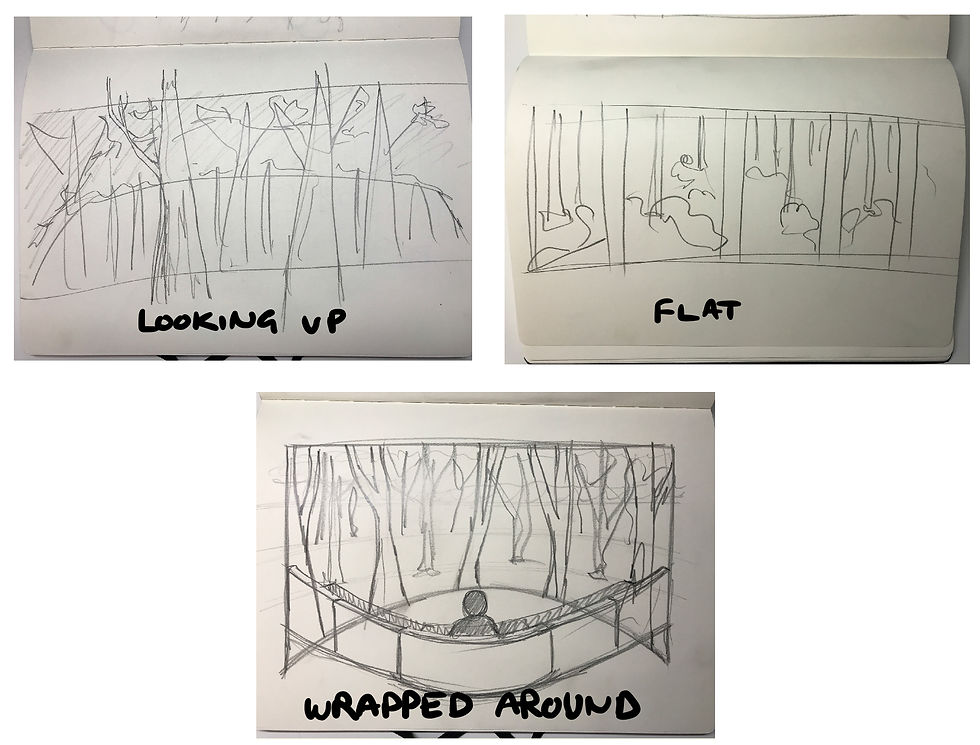
This thought led me to write the following in my notebook.
“Thinking about how to use perspective. Could the work be more than a two dimensional object. Thinking about a children’s play theatre.”
Not wanting to focus on any one thing to soon, I next set about doing a series of abstract colour studies in soft pastel. I spent some time experimenting in a none figurative space, thinking through the ideas of generating meaning without implicitly showing.

As you can see in this example, I referenced my earlier works compositionally but tried to avoid getting bogged down with details. As someone who has primarily worked in monotone, I found the soft pastel a very freeing medium. They handle like charcoal but blend like paint; I found the experiment very informative. I feel I’m slowly breaking down my reticence at working with colour.
Throughout this assignment, and the rest of the course for that matter, I have kept notes. Anything that comes to mind, I jot down and come back to it later. This is a good example of the kind of thing I’m in the habit of scrawling.

This idea had arrived and I felt it needed exploring.
“Using glue as a drawing tool. Working on black paper using glue as the drawing medium. Use graphite/charcoal powder to fix the lines. BLACK ON BLACK and visa versa, WHITE ON WHITE or a combination of both.”

This piece was done using PVA glue, black paper and a stiff paint brush. I tried to evoke the shapes of trees and natural forms by using swift deliberate strokes. While the glue was still wet, I dumped out a pot of charcoal powder over it and allowed the glue to dry. After cleaning up the excess, I was left with the image you see above. Without any direct lighting the page looks blank, untouched. But when a light shines at the page, the areas of paper that are lightly coated in glue reflect the light and shine out. In contrast, in areas where the glue was more heavily applied, the charcoal powder is more prevalent, and show up as areas significantly darker than the black of the paper.
“Image changes depending on lighting & viewing angle.”

I next repeated the experiment using the same method but this time I used white paper and white chalk dust. The effect here wasn’t as dramatic but the way the chalk built up like the impasto of paint did leave an impression on me.
Having spent some time experimenting I began to form an idea in my head. I thought about the idea of an exploded drawing, picking up on the child’s toy theatre idea. Transferring a two dimensional image on to multiple layers of clear plastic, each sheet working on top of the last building an image in three dimensions.
I set about doing some tests to see what was possible on over-head projector films. Alcohol marker seemed to go down ok, but they weren’t going to cut it.
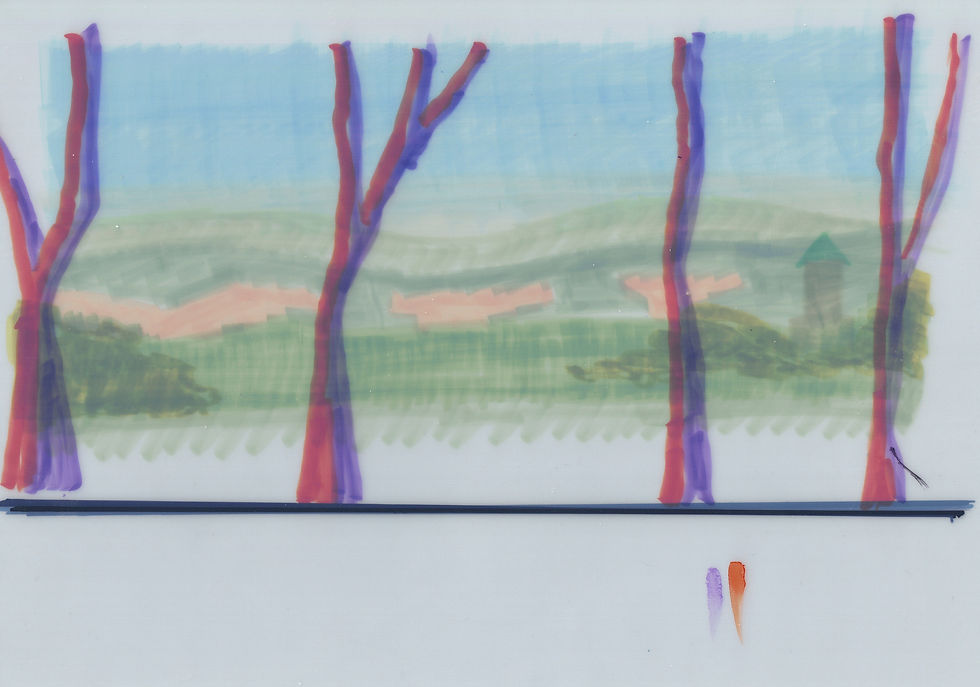
I thought the marks looked very flat and uninteresting and I wasn’t able to get the depth of colour I needed. I next tried painting directly on the sheet with acrylic paint. It almost worked but the application of the paint ultimately wasn’t consistent enough.
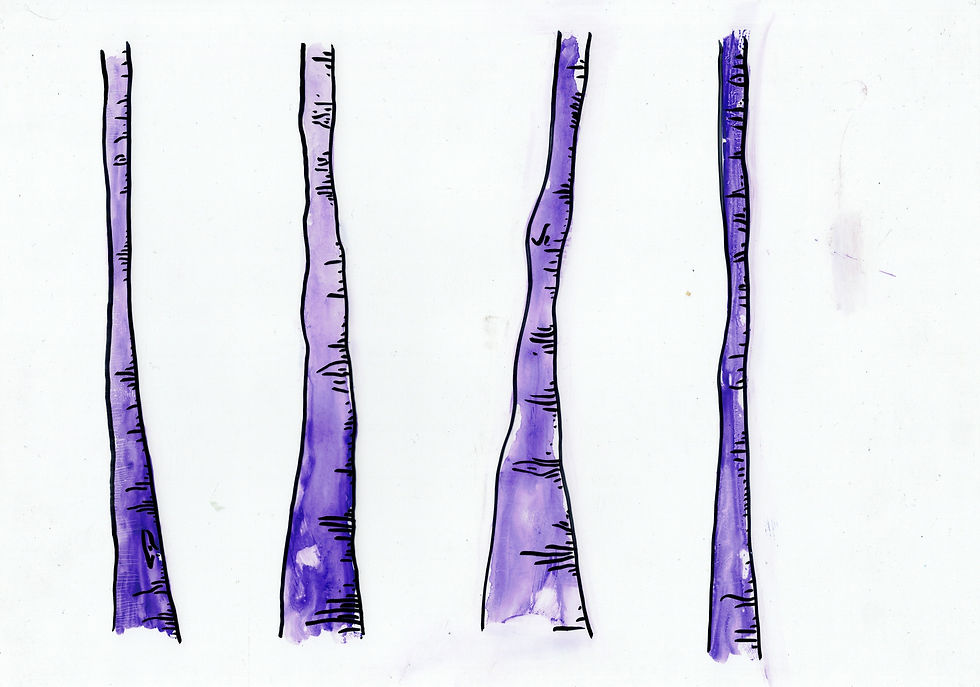
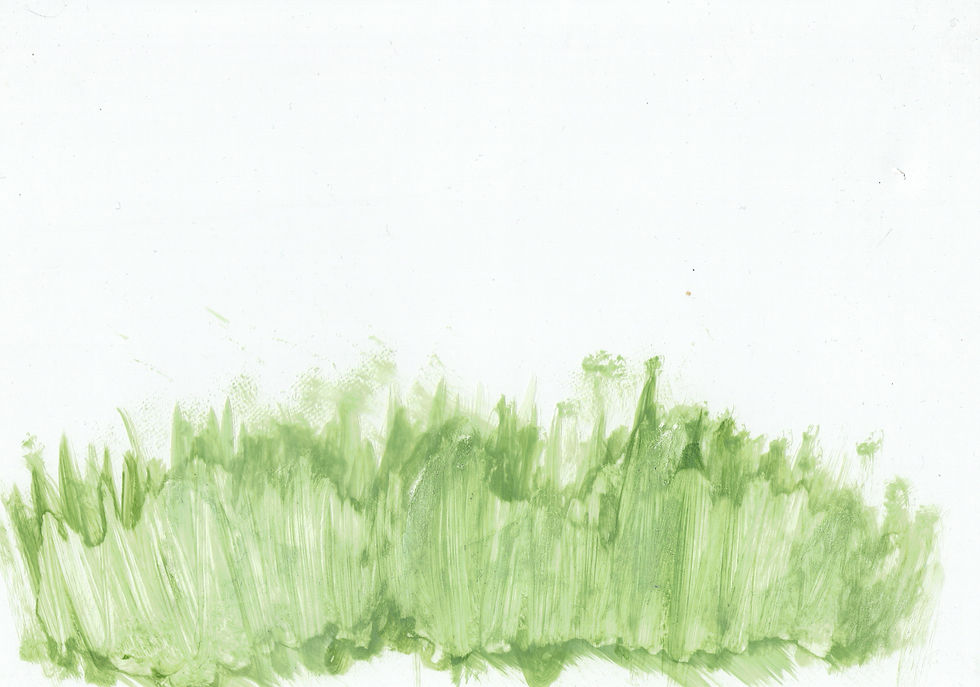
I realised I need to prepare the surface with some kind of ground. After some experimentation, I settled for Daniel Smith’s Watercolour Ground. This white paste reminded me of gesso but, because of its viscosity, it allowed me to build up interesting textures and showed the brushwork.
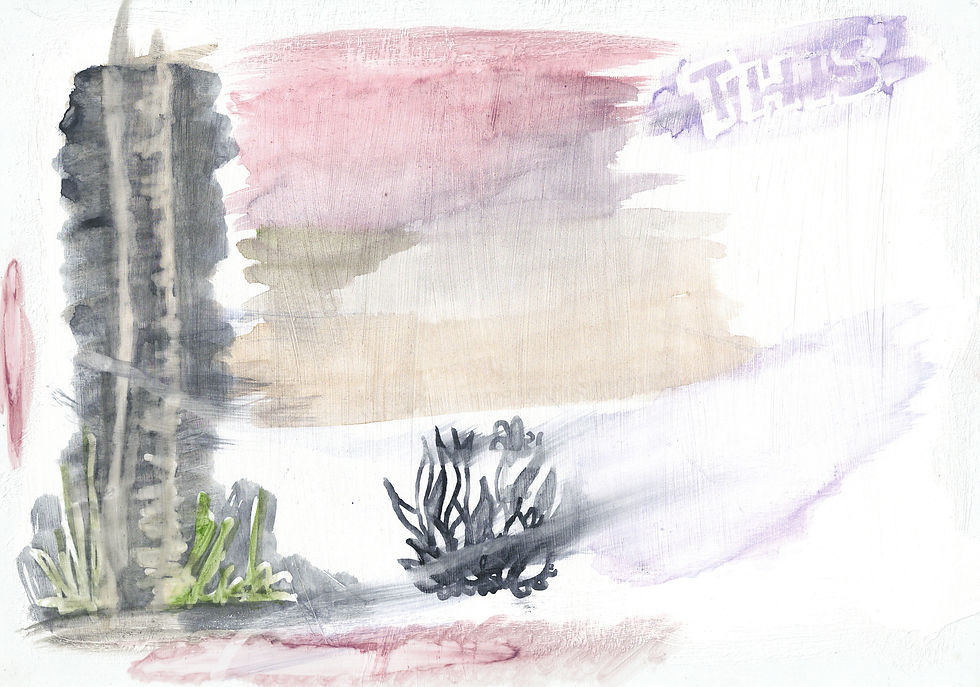
I concluded that the OHP films weren't going to work as I'd originally intended, they were too flimsy. I wanted the piece to be structural. I ordered some custom cut pieces of 4mm Acrylic; this would solve the issues I had with the OHP film. It was rigid, so would hold it's shape, plus it was significantly clearer than the plastic sheets. I did some more experiments applying different thicknesses of ground. Building up textural impasto in some places and thinner smother areas where light would pass through in others.
Now the real work would need to begin; what would my final composition be? What would I draw? I knew that I wanted to explore the idea of landscape, my feeling towards it and the disconnect lockdown had caused. I wanted the landscape to feel idyllic, warm and sunny, a place you want to be. But it would be empty, no people, no life, the outside world out of reach. To emphasise this feeling, I wanted to place, on the very top sheet a motif of tree trunks. These trees would have no leaves or foliage, as though they were from a winter scene. I thought about these trees as bars, like a prison window. Blocking the scene and preventing the viewer free and easy access the landscape.
Because of the way I intended to produce the work, a certain level of pre-planning was required. I needed to know what would go on each sheets of the Acrylic. I decided that technology would be the best way forward here. Using a drawing tablet, I constructed a mock-up of the intended piece. This allowed me to get creative. I had the freedom to experiment with different compositions without wasting materials which were costly and had a long lead time for delivery, but also allowed me to pull in and out aspects of my previous work, reflecting on the past three years, and ultimately to construct an ‘imagined’ landscape, which was directly informed by findings from my work, experimentation, and experience throughout this strange time.
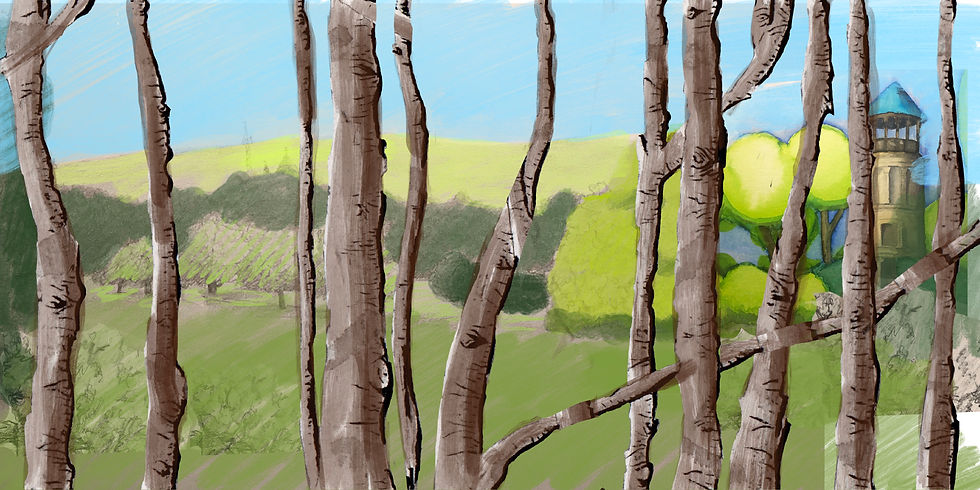
This was the template for the work. I printed it out actual size, matching to the dimensions of the acrylic boards. I laid the perspex over the top and then painted in the areas with the white ground. Taking care to ensure I was applying the ground with a texture and thickness for that particular area. Because I was working on one panel at a time, I found that each panel informed and changed the next one, and I would often move back and forth from one to another. Changing things in response to another one, until I was happy with how each panel looked and related to each other.
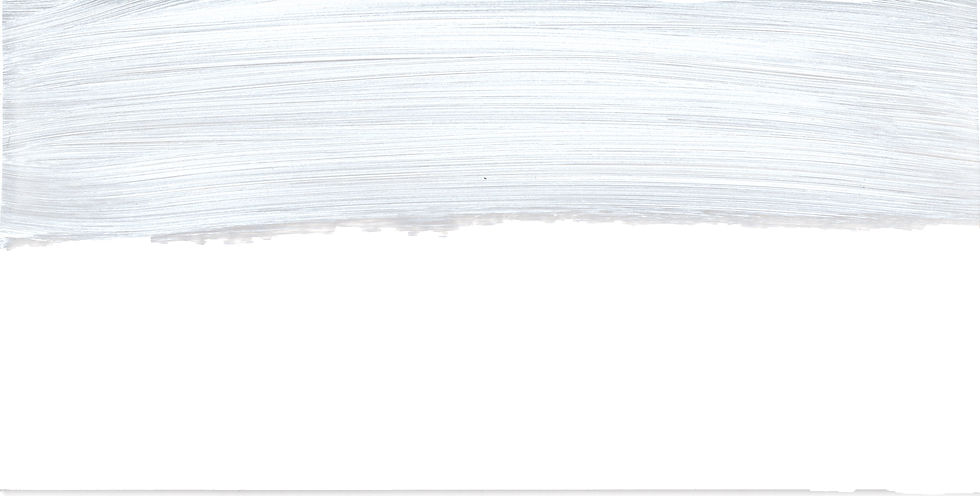
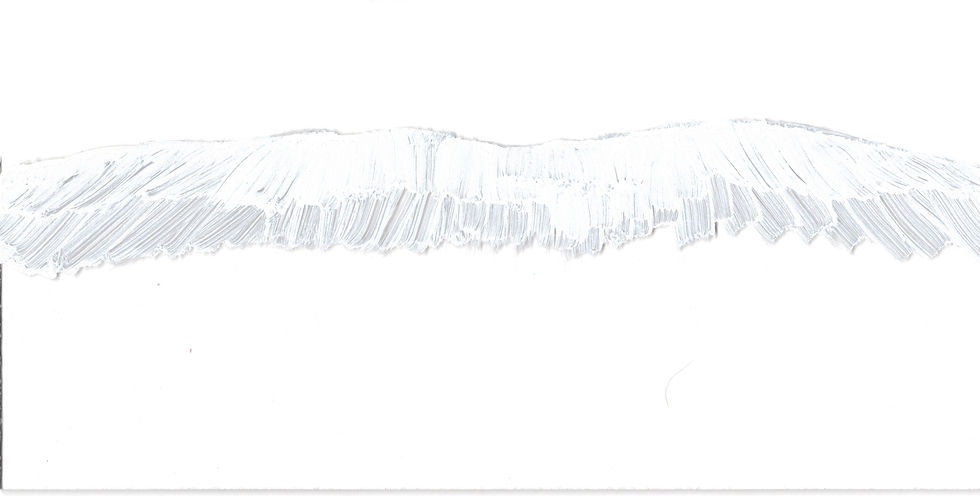

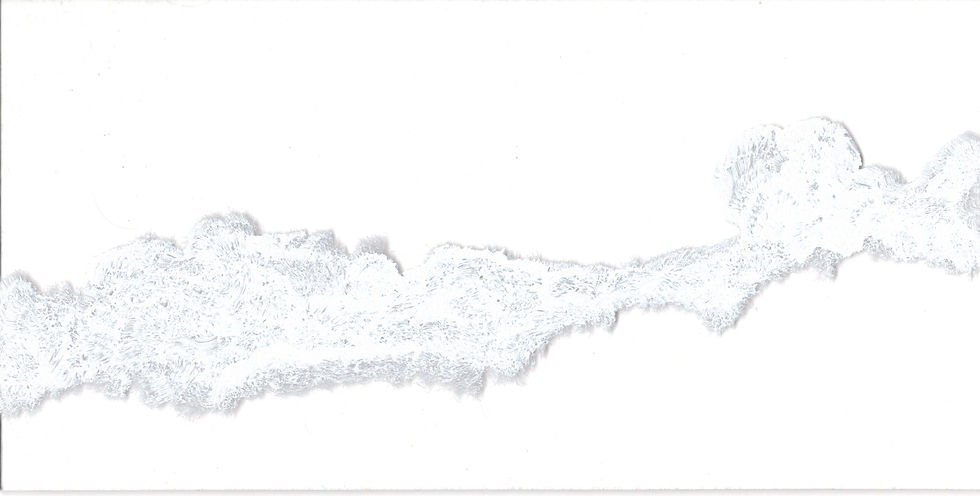
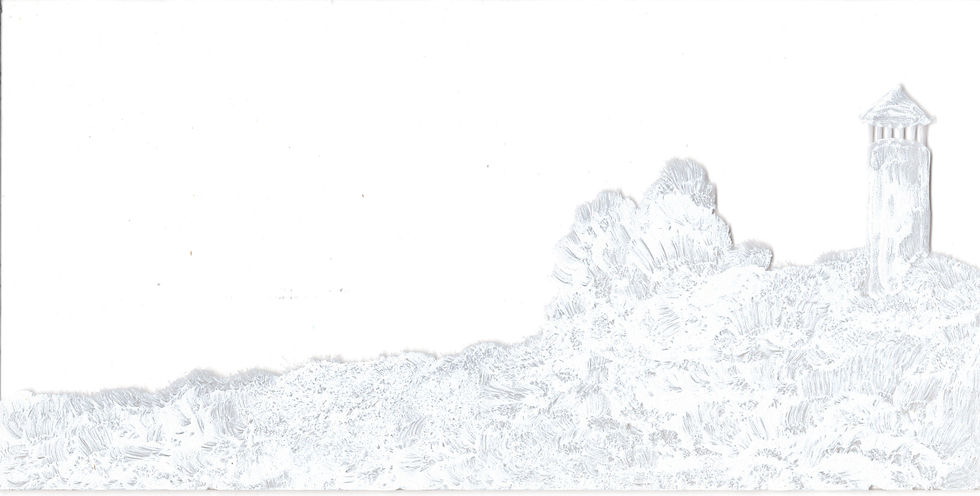
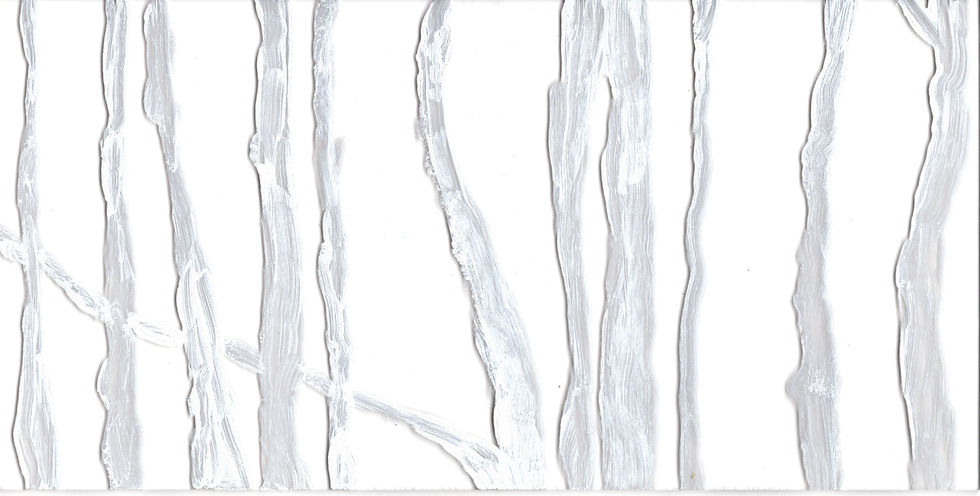
Here you can see each individual layer after I'd applied the ground.
The application of colour was a very similar process to applying the ground. Each panel was worked on individually up to a point, then brought together and altered together, to work with each other as a whole.
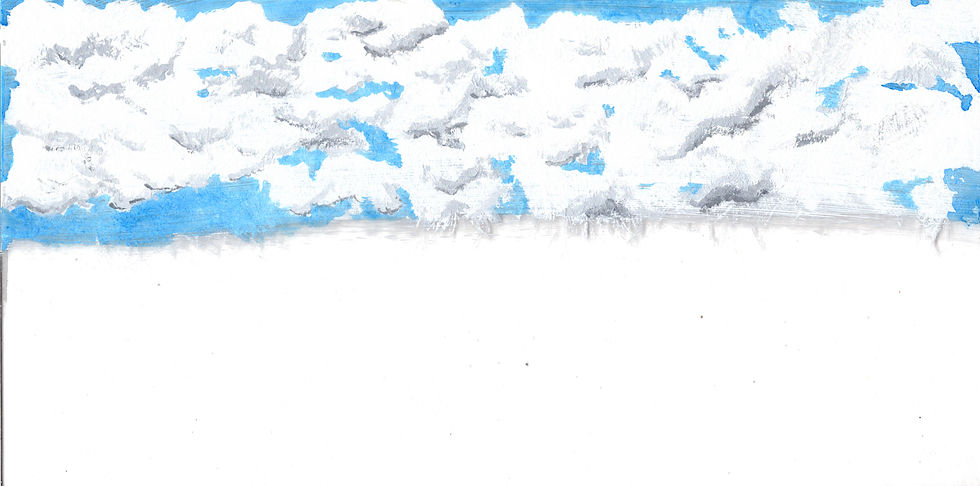

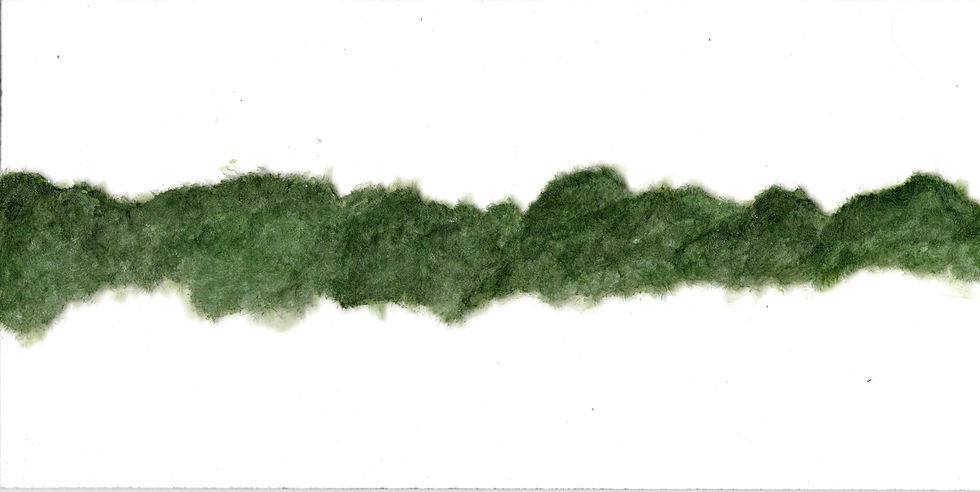
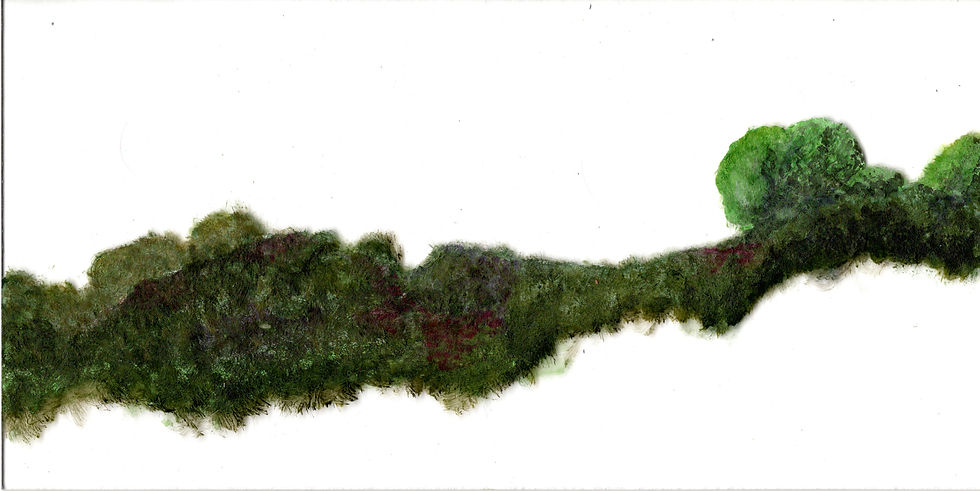
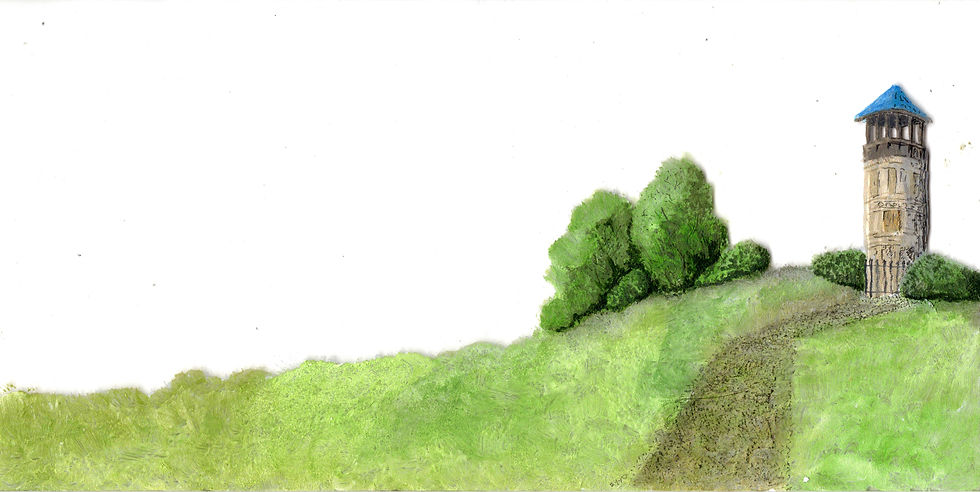
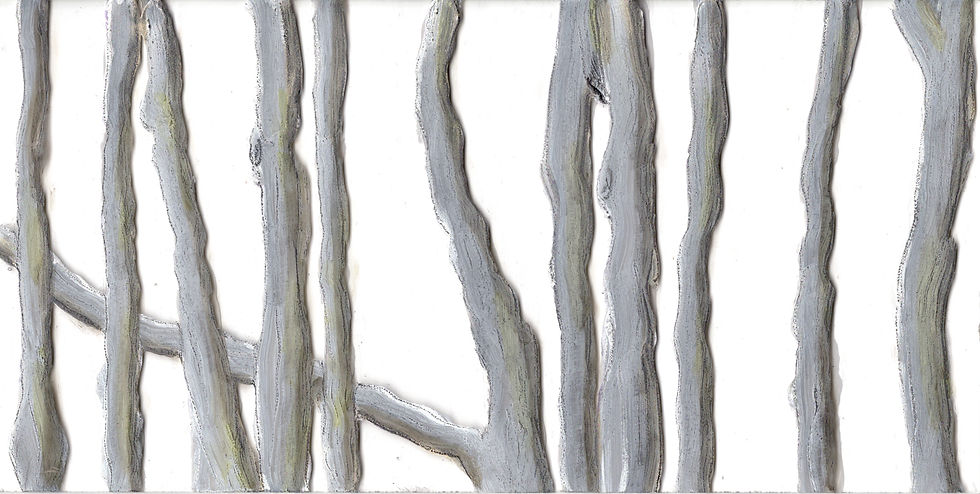
From very early in the process of this piece, I had been thinking about how I would display it. I knew I wanted varying gaps between the layers, so it could be viewed from multiple angles. I wanted the viewer to have to work to see the whole image, moving their view point to look behind. Again strengthening the disconnection between the viewer and the landscape. After a few failed attempts to construct a stand using wood and cork, I struck upon the idea of using magnets

Although this method works, I wish I could come up with a permanent solution and will continue thinking it through. I'd ideally like the viewer to be able to pick the piece up and turn it in their hands while viewing it, to increase the variety of viewpoints, amplifying the sense of unreality of a landscape both in your hands, and yet somehow still out of reach.
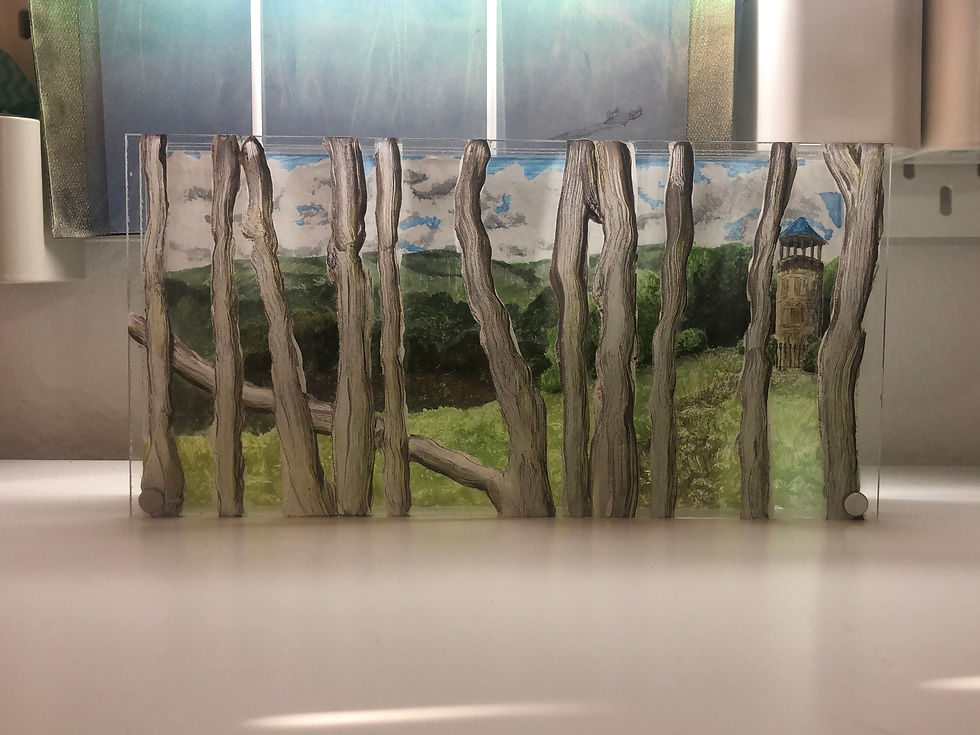

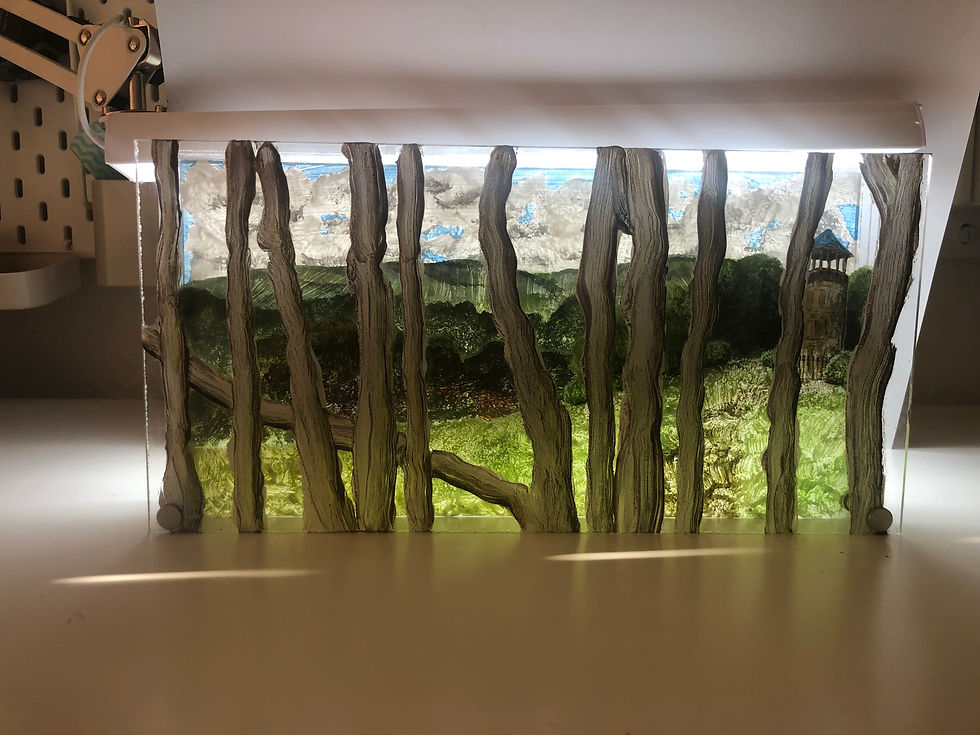
So to conclude, I set out to explore landscape and my feeling towards it during lockdown. I think I have succeeded in this goal: looking at the work makes me want to be outside. I particularly like how the work changes depending on the lighting conditions. This reflects how mood and emotions can swing wildly and quickly while being confined. I'm proud that I pushed myself to explore new and unusual materials and techniques. I feel this assignment has demonstrated how differently I now think about producing work. I've moved a long way from the man who started the course, more aware of myself as an artist; a person with something to say, with a desire to communicate that and explore it and challenge it, through the medium of art, not just a man who draws pictures.














Commentaires